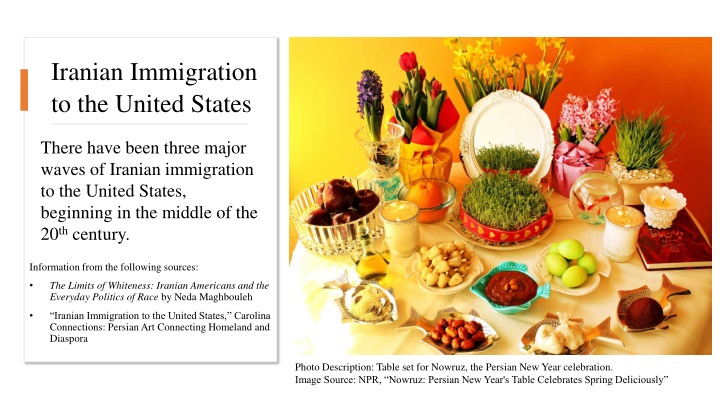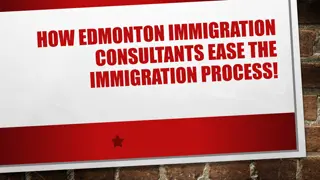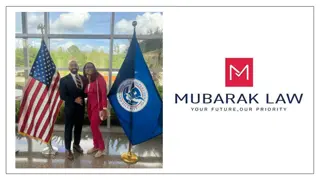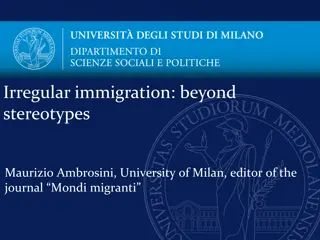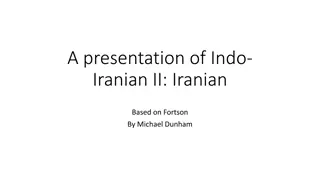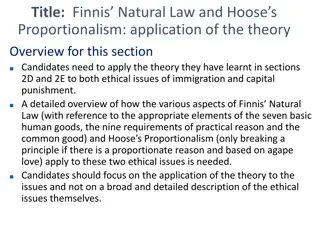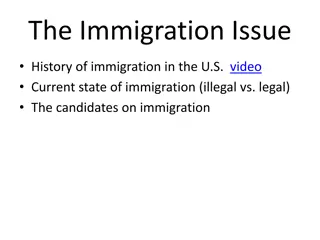Iranian Immigration to the United States
There have been three significant waves of Iranian immigration to the United States starting in the mid-20th century. Explore the history, impacts, and cultural contributions of Iranian immigrants to the US.
Download Presentation

Please find below an Image/Link to download the presentation.
The content on the website is provided AS IS for your information and personal use only. It may not be sold, licensed, or shared on other websites without obtaining consent from the author.If you encounter any issues during the download, it is possible that the publisher has removed the file from their server.
You are allowed to download the files provided on this website for personal or commercial use, subject to the condition that they are used lawfully. All files are the property of their respective owners.
The content on the website is provided AS IS for your information and personal use only. It may not be sold, licensed, or shared on other websites without obtaining consent from the author.
E N D
Presentation Transcript
Iranian Immigration to the United States There have been three major waves of Iranian immigration to the United States, beginning in the middle of the 20th century. Information from the following sources: The Limits of Whiteness: Iranian Americans and the Everyday Politics of Race by Neda Maghbouleh Iranian Immigration to the United States, Carolina Connections: Persian Art Connecting Homeland and Diaspora Photo Description: Table set for Nowruz, the Persian New Year celebration. Image Source: NPR, Nowruz: Persian New Year's Table Celebrates Spring Deliciously
First Wave: 1950-1979 In the mid-1950s, there was a large growth of the middle class in Iran in large cities due to increases in oil revenues, economic development, and domestic and foreign investments. Young Iranians were interested in higher education in order to meet new career demands and become more economically mobile. During this time, U.S. universities offered some of the best programs in engineering and other technical fields. American universities welcomed Iranian students. Students and visitors helped to establish networks that would support subsequent larger-scale immigration. Many Iranian immigrants in this wave were specialists in engineering or medicine. American immigration law at the time prioritized giving visas to technically skilled applicants, as opposed to more working-class people.
Impact of the Iranian Revolution By the mid-1970s, there were more foreign students from Iran in American universities than any other national group. In 1979, Iranians were legally classified as white according to the United States census. Later that year, the Iranian hostage made many Americans start to view Iranians as foreign and a threat. Many students and visitors intended to return to Iran; however, the Iranian Revolution of 1979 prevented them from doing so. After the 1979 Iranian Revolution the 50,000 Iranian students studying at American universities were subjected to extra criticism. The American government demanded that they all undergo extra screening, several thousand students were deported. In this photo, taken in Nov 1979, Iranian international students fill out immigration forms. Image source: Mark Perlstein/The Life Images Collection/Getty Images via Timeline
Second Wave: 1979-2001 The 1979 revolution, the establishment of the Islamic Republic by Ayatollah Ruhollah Khomeini, and the eight-year war between Iran and Iraq from 1980-1988 all contributed to the migration of Iran s middle class out of the country. Immigrants who came to the United States during this time were primarily middle and upper-class families, many of whom were political refugees and exiles. Immigrants included ethnic and religious minorities who feared persecution, families associated with the previous government, and political dissenters. Photo: Ayatollah Ruhollah Khomeini
Third Wave: 2001- Present Policy and sentiment shifts in the United States in the years following September 11, 2001, made it more difficult for Iranians to obtain refugee visas and permanent residency status. These changes prompted the creation of Iranian American organizations, determined to safeguard the rights of Iranian American citizens and bring light to discriminatory media that affected their communities. As a result, Iranian American immigrant levels increased to more than 7,000 new arrivals in 2016. Iranian immigration was Iranian immigration was curtailed again by former the former President Trump administration s travel ban. President Biden has since overturned the ban. Table set for Nowruz, the Persian New Year celebration. Image Source: New York Times An Iranian Holiday That s Perfect for Americans
